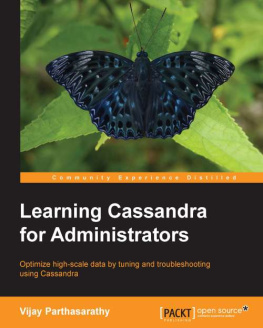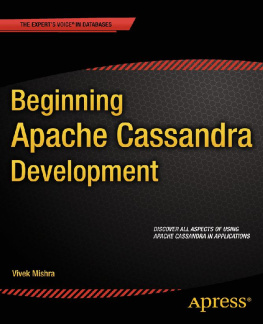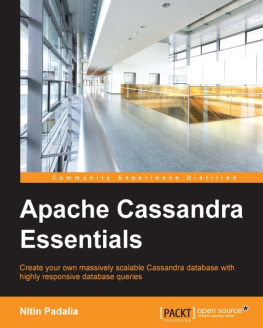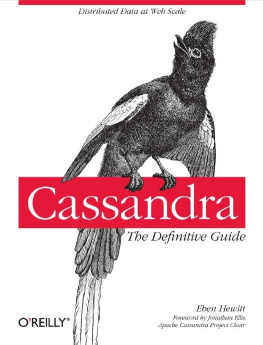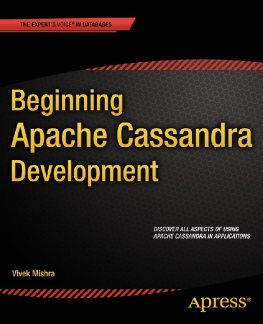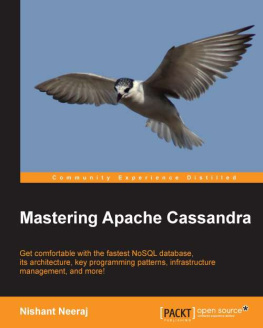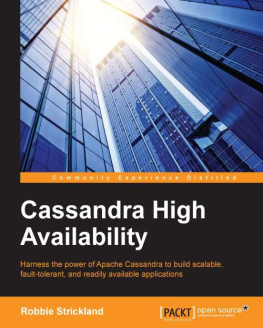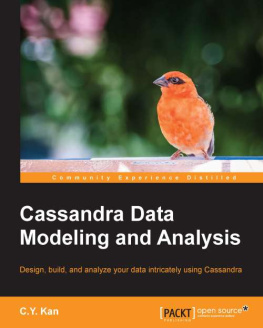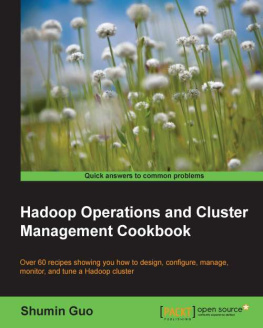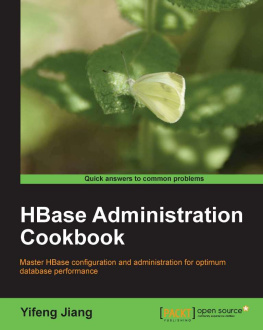Vijay Parthasarathy - Learning Cassandra for Administrators
Here you can read online Vijay Parthasarathy - Learning Cassandra for Administrators full text of the book (entire story) in english for free. Download pdf and epub, get meaning, cover and reviews about this ebook. year: 2013, publisher: Packt Publishing, genre: Home and family. Description of the work, (preface) as well as reviews are available. Best literature library LitArk.com created for fans of good reading and offers a wide selection of genres:
Romance novel
Science fiction
Adventure
Detective
Science
History
Home and family
Prose
Art
Politics
Computer
Non-fiction
Religion
Business
Children
Humor
Choose a favorite category and find really read worthwhile books. Enjoy immersion in the world of imagination, feel the emotions of the characters or learn something new for yourself, make an fascinating discovery.
- Book:Learning Cassandra for Administrators
- Author:
- Publisher:Packt Publishing
- Genre:
- Year:2013
- Rating:5 / 5
- Favourites:Add to favourites
- Your mark:
Learning Cassandra for Administrators: summary, description and annotation
We offer to read an annotation, description, summary or preface (depends on what the author of the book "Learning Cassandra for Administrators" wrote himself). If you haven't found the necessary information about the book — write in the comments, we will try to find it.
Optimize high-scale data by tuning and troubleshooting using Cassandra
Overview
- Install and set up a multi datacenter Cassandra
- Troubleshoot and tune Cassandra
- Covers CAP tradeoffs, physical/hardware limitations, and helps you understand the magic
- Tune your kernel, JVM, to maximize the performance
- Includes security, monitoring metrics, Hadoop configuration, and query tracing
In Detail
Apache Cassandra is a massively scalable open source NoSQL database. Cassandra is perfect for managing large amounts of structured, semi-structured, and unstructured data across multiple data centers and the cloud. Cassandra delivers linear scalability and performance across many commodity servers with no single point of failure.
This book starts by explaining how to derive the solution, basic concepts, and CAP theorem. You will learn how to install and configure a Cassandra cluster as well as tune the cluster for performance. After reading the book, you should be able to understand why the system works in a particular way, and you will also be able to find patterns (and/or use cases) and anti-patterns which would potentially cause performance degradation. Furthermore, the book explains how to configure Hadoop, vnodes, multi-DC clusters, enabling trace, enabling various security features, and querying data from Cassandra.
Starting with explaining about the trade-offs, we gradually learn about setting up and configuring high performance clusters. This book will help the administrators understand the system better by understanding various components in Cassandras architecture and hence be more productive in operating the cluster. This book talks about the use cases and problems, anti-patterns, and potential practical solutions as opposed to raw techniques. You will learn about kernel and JVM tuning parameters that can be adjusted to get the maximum use out of system resources.
What you will learn from this book
- Explore trade-offs and basic concepts
- Install Cassandra, choose hardware, and configure the cluster
- Query and insert data and CQL
- Get to grips with performance tuning
- Find out about Hadoop integration and evolving apps
- Discover anti-patterns and how to secure your cluster
Approach
This book is a practical, hands-on guide, taking the reader from the basics of using Cassandra though to the installation and the running.
Who this book is written for
Learning Cassandra for Administrators is for administrators who manage a large deployment of Cassandra clusters, and support engineers who would like to install the monitoring tools and who are also in charge of making sure the cluster stays the same, ensuring that the service is always up and running.
Vijay Parthasarathy: author's other books
Who wrote Learning Cassandra for Administrators? Find out the surname, the name of the author of the book and a list of all author's works by series.

